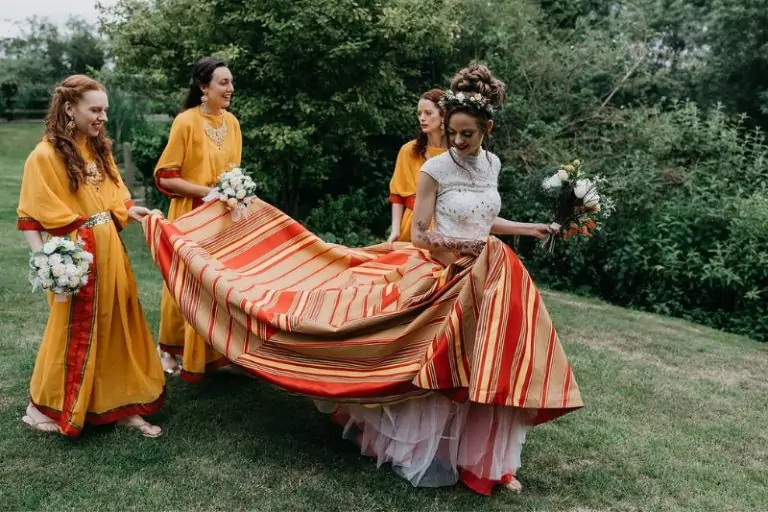

somali dress practices through time
History, politics, and societal dynamics weave into the dress tradition of Somalia, a nation rich in cultural heritage and diversity. Heather Marie Akou’s book, “The Politics of Dress in Somali Culture,” offers a compelling narrative that unravels the intricate tapestry of Somali attire from the 19th century to the present day. By exploring the interrelation between politics and dress, Akou sheds light on how Somali aesthetics surrounding the body have evolved over time, reflecting shifts in power, identity, and social norms.
In Somalia, dress practices are not merely about fashion; they are deeply entwined with political realities and social structures. Akou posits that a multitude of factors, such as nomadic lifestyles, urbanisation, and external influences like colonialism, influence dress choices. The book highlights how Somali dress has adapted to changing political landscapes, from the colonial period‘s introduction of imported materials like merikani to the post-independence era’s tailored uniforms.
Contrary to the notion of a static “traditional” dress, Akou demonstrates that Somali attire has continuously evolved in response to shifting circumstances. While the macawis and colourful turbans remain emblematic of Somali dress, their meanings have evolved over time. The book discusses how dress practices have adapted to modern influences, such as the increasing appearance of the veil in the diaspora, reflecting globalised interactions and the complexities of identity formation.
Akou’s exploration extends beyond political narratives to delve into the nuanced dynamics of Somali society. Dress choices are not monolithic but vary according to region, gender, and socioeconomic status. For instance, the adoption of printed kanga cloths on the Benadir Coast underscores the regional variations in Somali attire, highlighting the diverse influences that shape dress practices.
While Akou’s research sheds important light on Somali dress customs, it also highlights the difficulties of researching in a place with unstable political systems and scant archival materials. Despite these obstacles, the book underscores the resilience of Somali culture in preserving its sartorial traditions amidst socio-political upheavals. Furthermore, it identifies avenues for future research, inviting scholars to explore untapped sources and delve deeper into specific aspects of Somali dress history.
“The Politics of Dress in Somali Culture” offers a nuanced perspective on Somali identity, revealing how dress serves as a tangible expression of historical narratives and contemporary realities. By contextualising Somali attire within broader socio-political dynamics, Akou’s work enriches our understanding of the complexities inherent in cultural practices. As Somali communities navigate the challenges of the modern world, their dress traditions continue to evolve, reflecting a resilient heritage rooted in centuries of tradition.
Despite the challenges faced by Somali communities, there is a remarkable commitment to preserving and adapting traditional dress practices. The vibrant colours, intricate patterns, and symbolic significance of Somali attire endure as markers of cultural identity and pride. However, alongside preservation efforts, there is a recognition of the need for adaptation to contemporary contexts. Somali dress continues to evolve, embracing new materials, designs, and styles while retaining its essence rooted in history and tradition.
The Somali diaspora plays a significant role in shaping the trajectory of Somali dress practices. As Somalis migrate to different parts of the world, they carry with them their cultural heritage, including their attire. Akou’s research extends beyond the borders of Somalia to explore how dress practices evolve within diasporic communities. From Minneapolis to Mogadishu, Somali dress serves as a powerful symbol of connection to homeland and identity amidst the challenges of displacement and assimilation.
“The Politics of Dress in Somali Culture” offers a comprehensive exploration of Somali dress practices, illuminating the intricate interplay between politics, culture, and identity. Through meticulous research and insightful analysis, Akou provides a nuanced understanding of Somali attire, revealing its dynamic nature and enduring significance. As Somalia continues to navigate the complexities of nation-building and cultural revival, its dress traditions serve as a resilient expression of heritage and belonging.
The Oklahoma City Thunder secured their tenth consecutive victory by beating the Chicago Bulls 145-117. This victory raised their season…
Rob Walter Resigns his Position as coach for the Proteas men's team for white-ball games because personal problems needed attention.…
Starting April 2, South African drivers will get lower costs when filling their tanks as fuel prices decrease for all…
The U.S.-based driver training company Zutobi analyzed road safety worldwide and found South Africa stays last in driving danger since…
The Basketball Africa League (BAL) returns for its 2025 season with exciting changes and developments. Since 2019 the NBA-linked basketball…
The Somali president supports their military forces to eliminate the threats from Al-Shabaab, ISIS, and Al-Qaeda. The Somali National Army…
This website uses cookies.